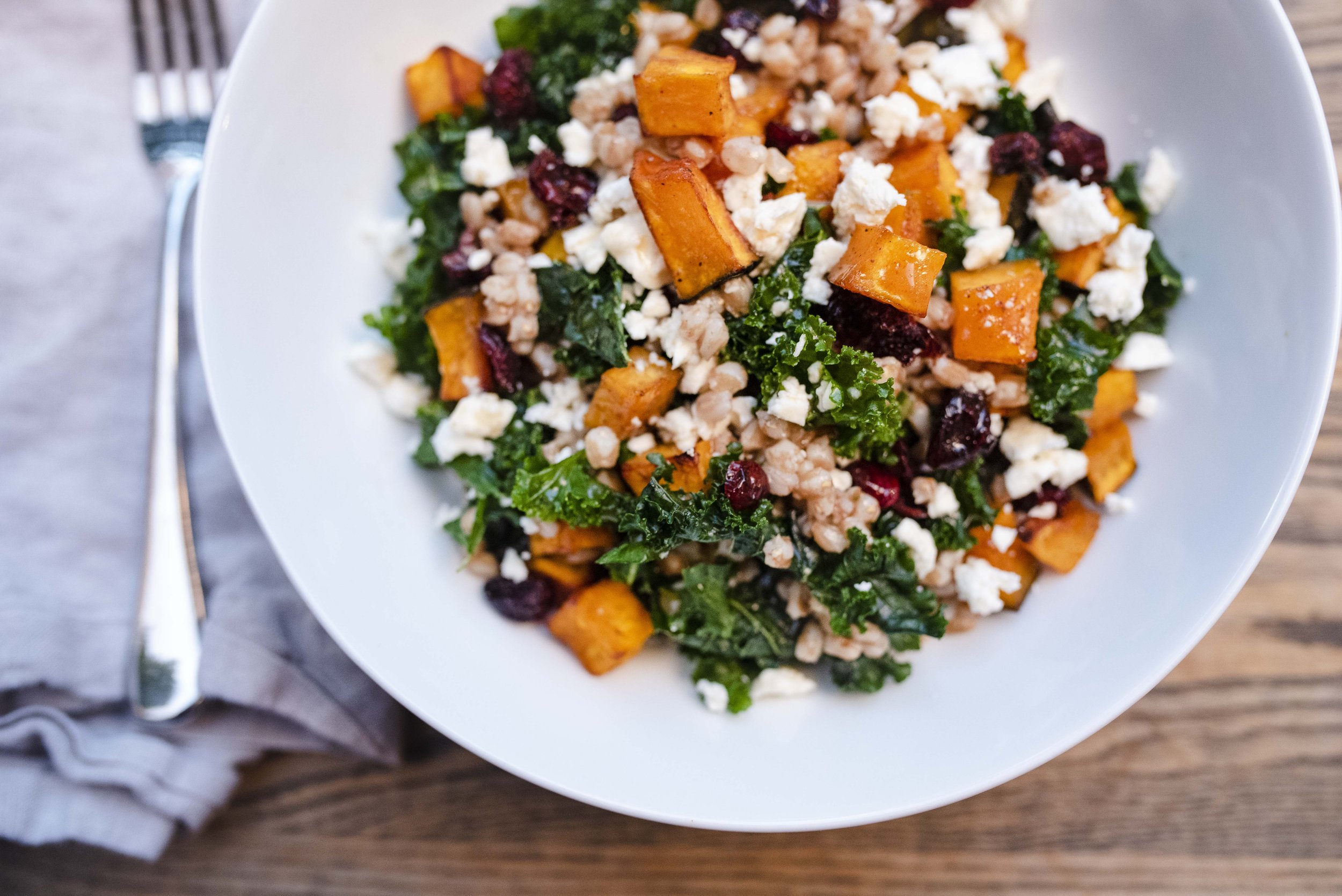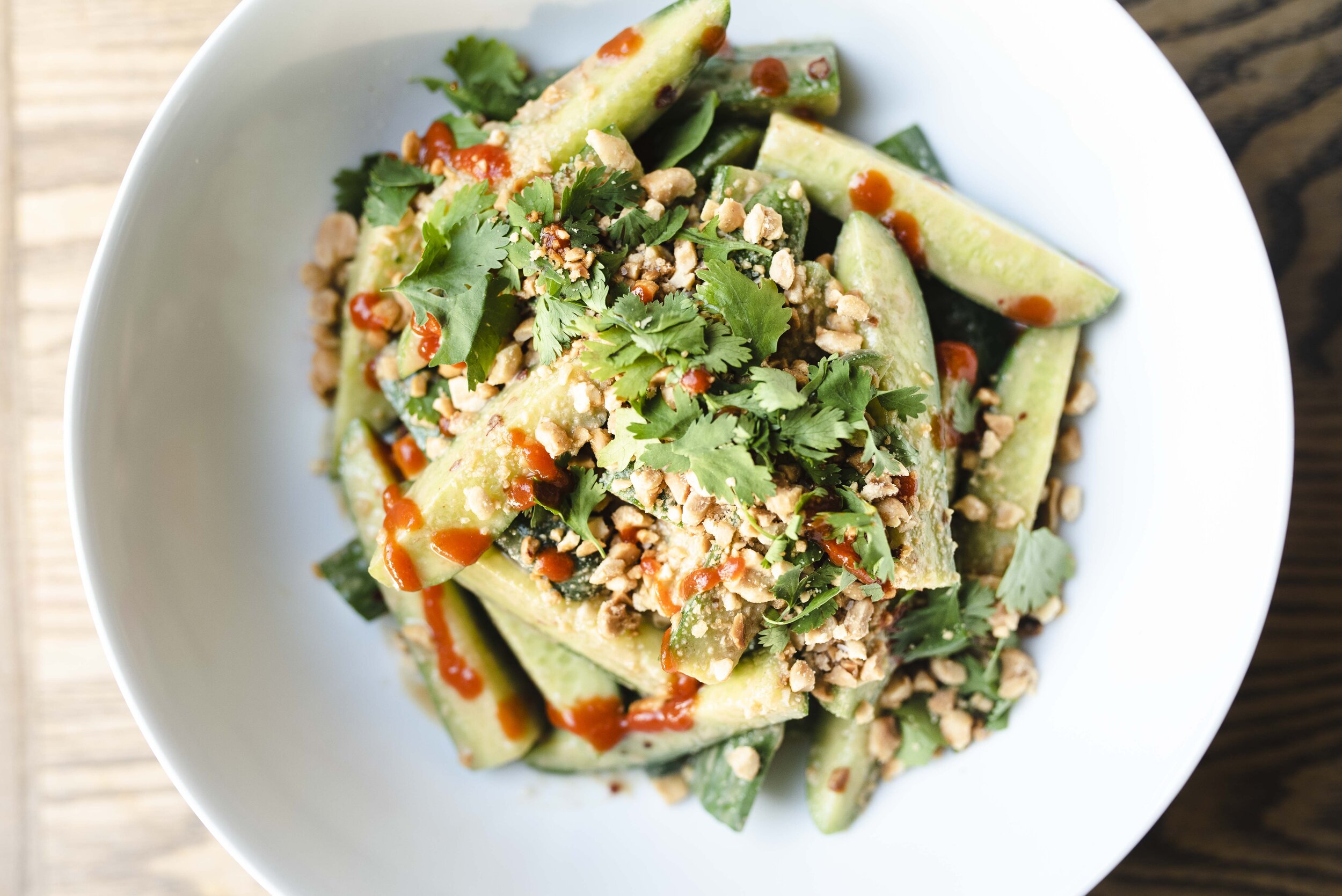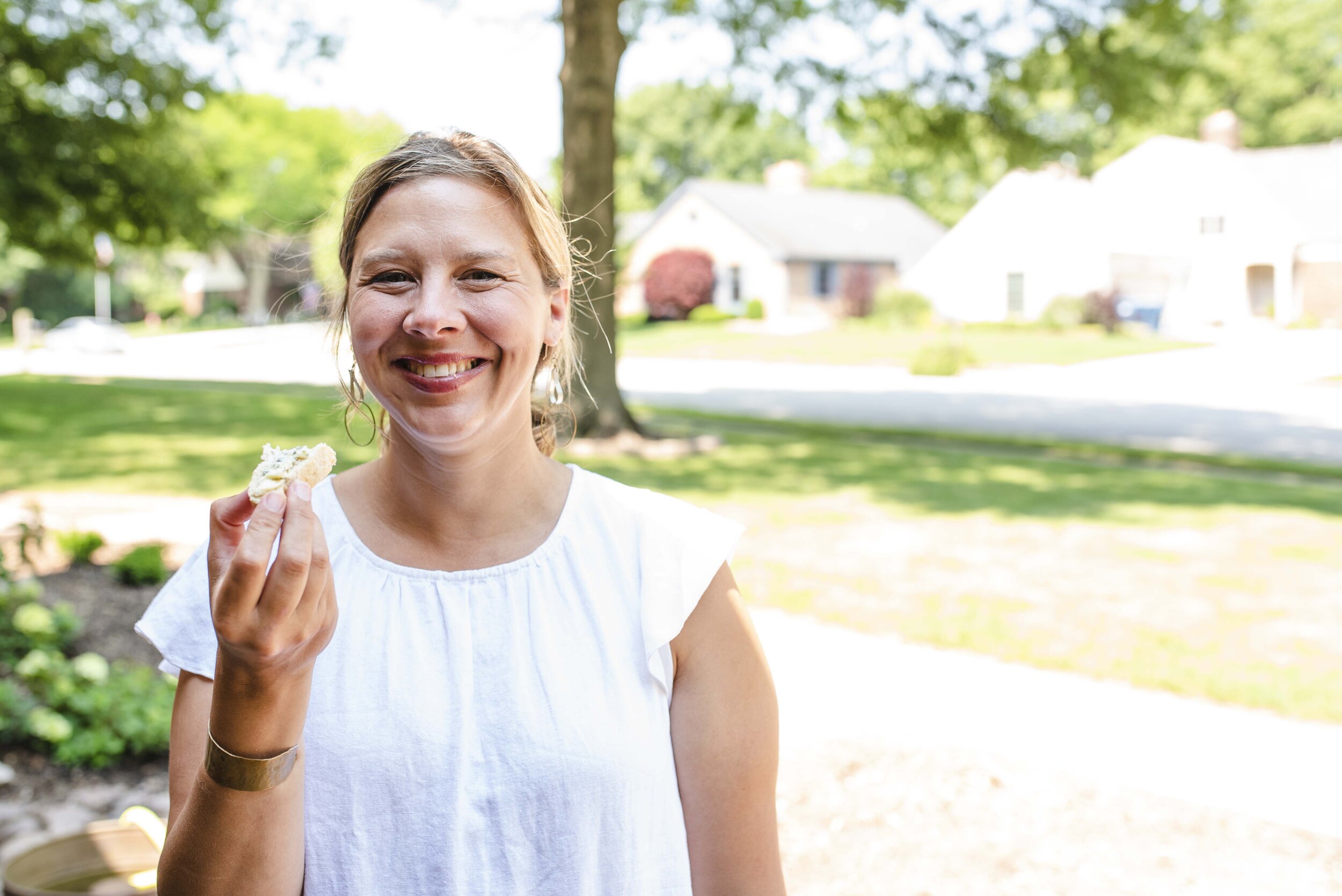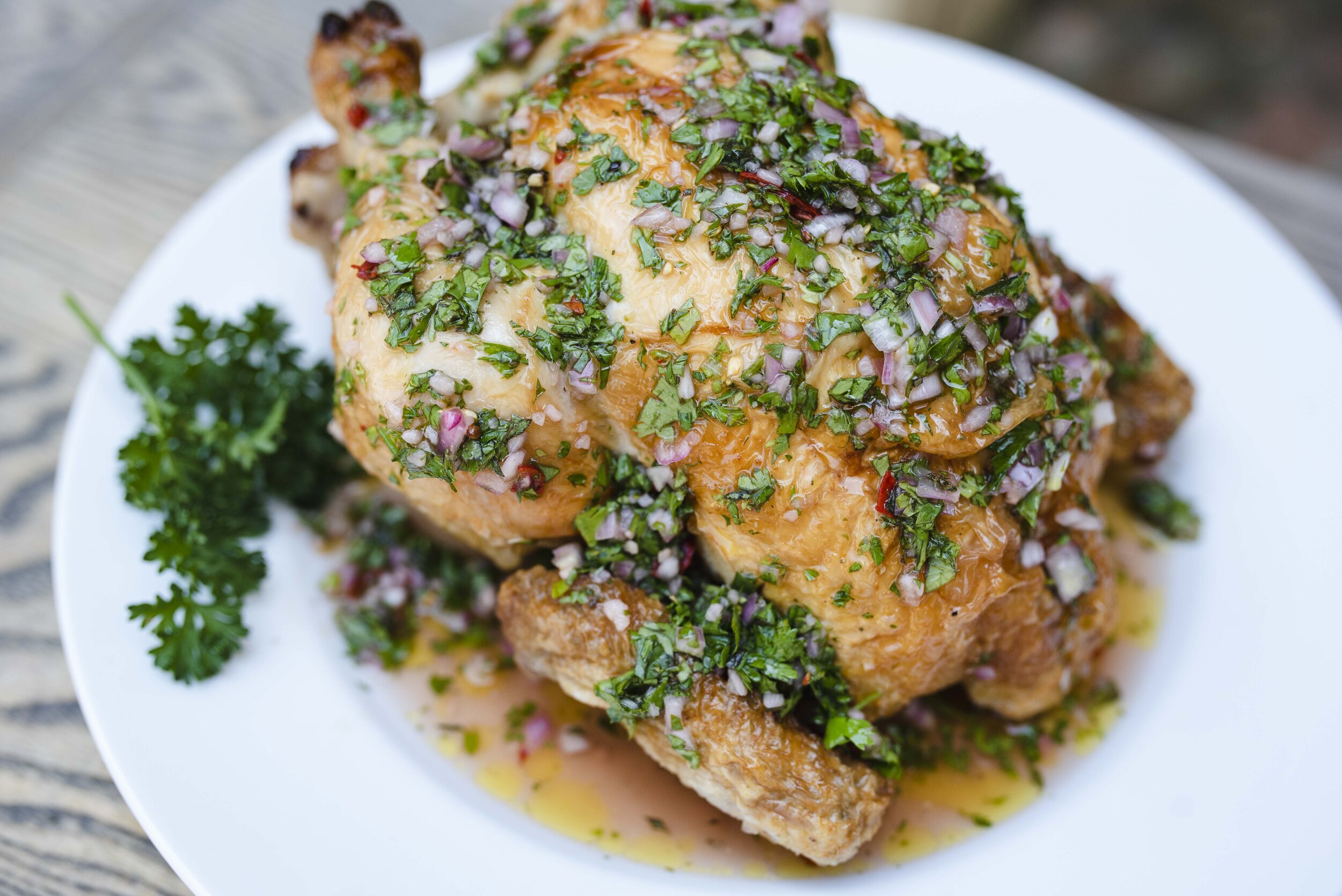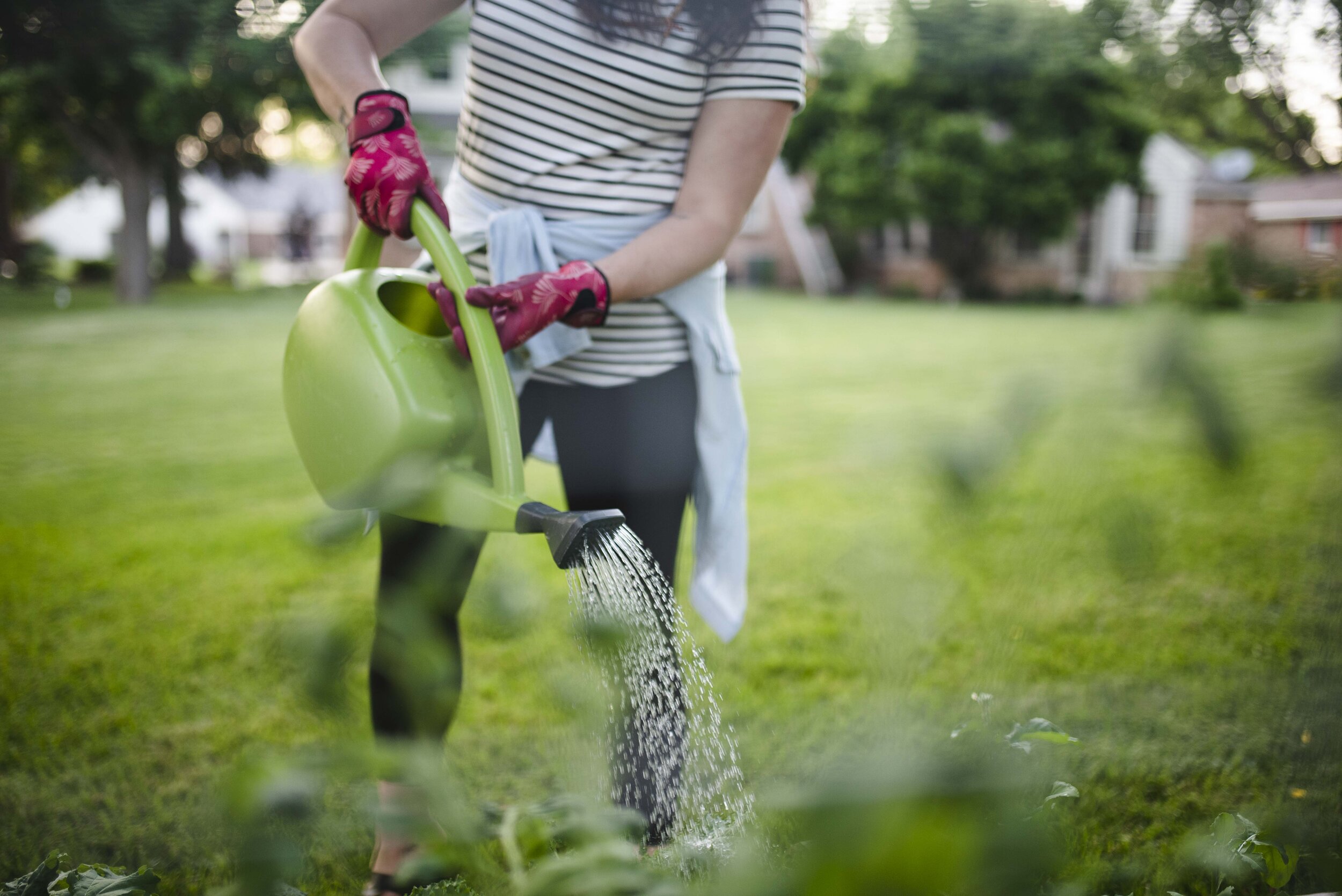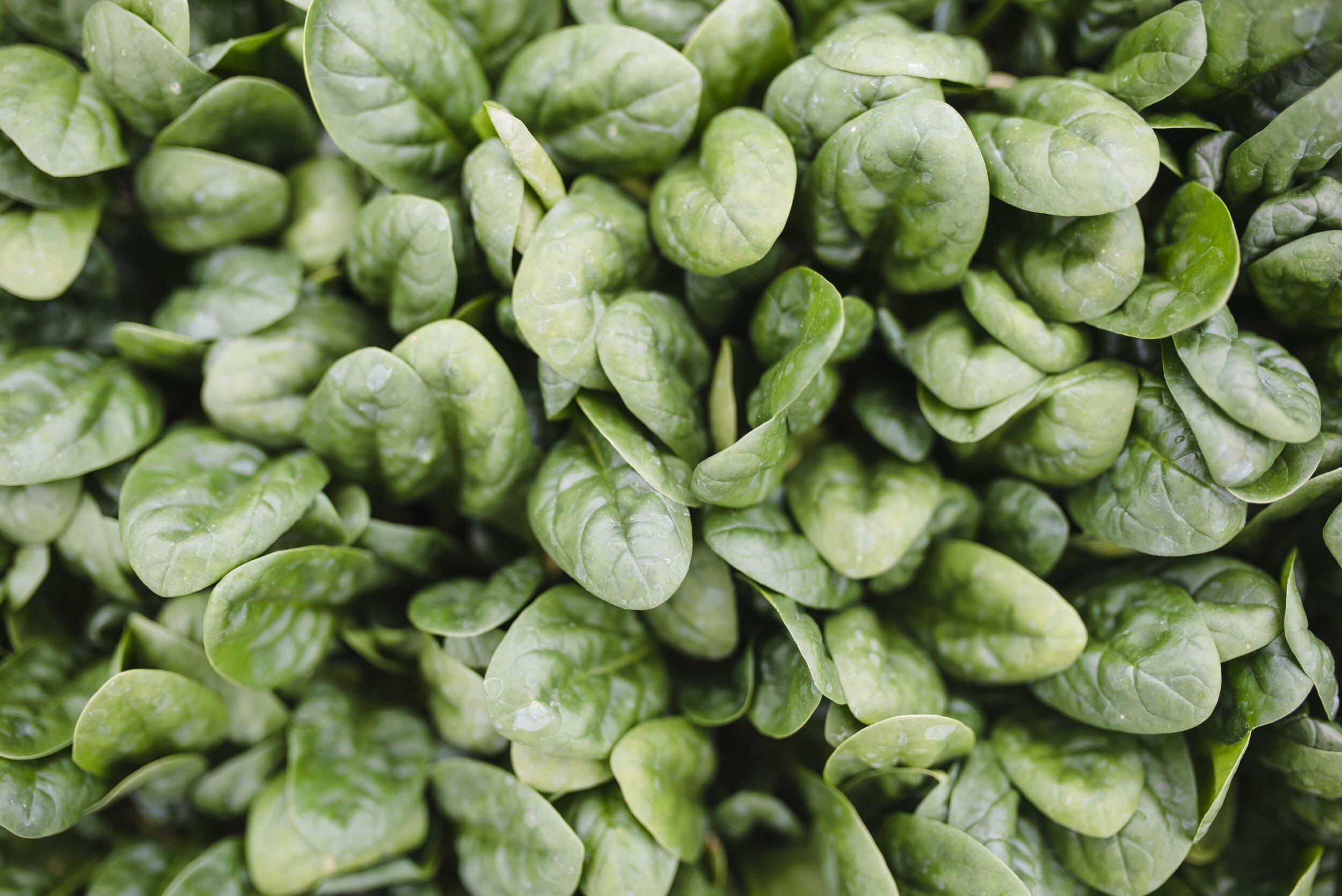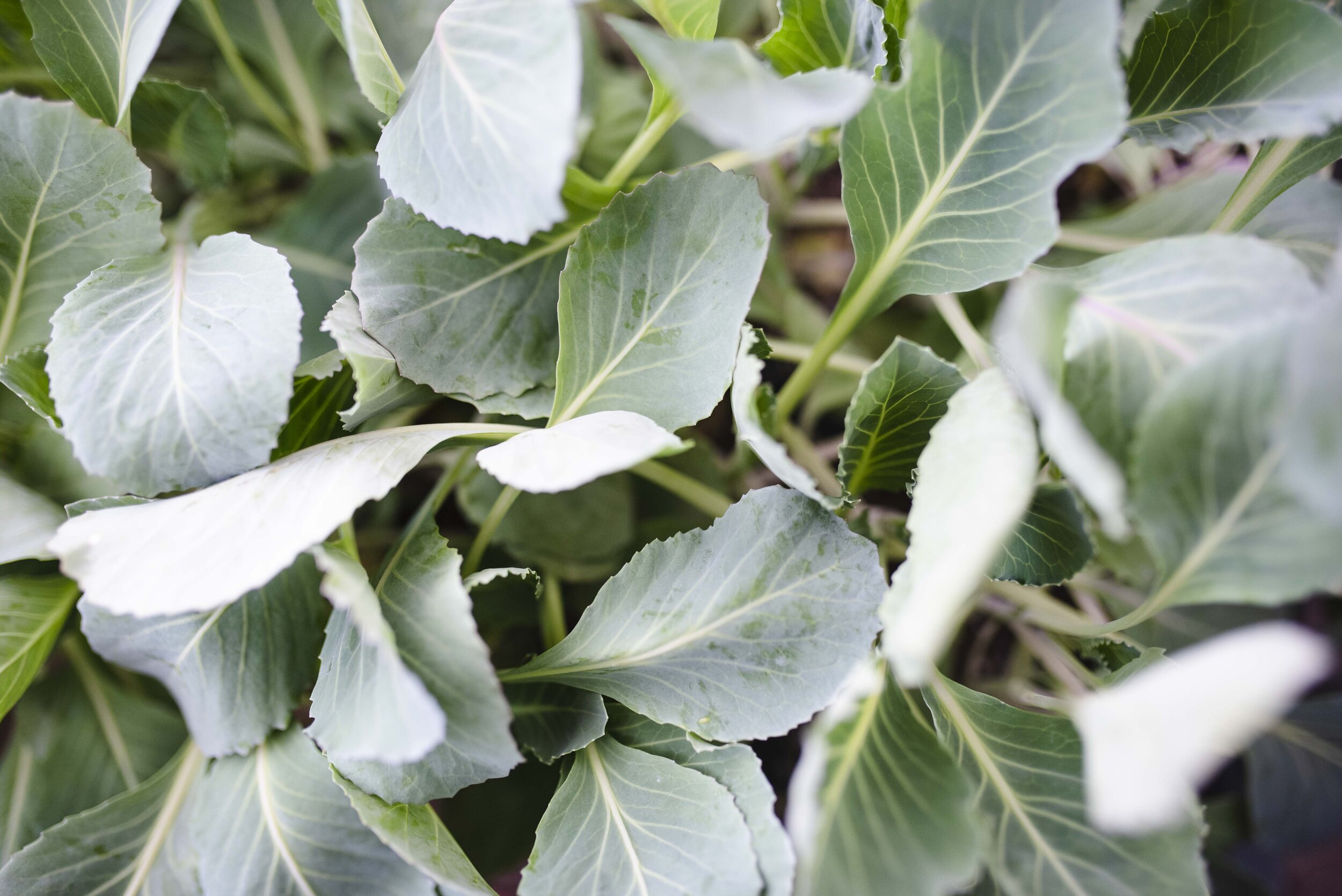
NEWS
Homegrown: Squash
Is there anything that screams fall more than a delicious, rich squash dish? I think not! Benoit Greenhouses still has tons of delicious squash for purchase. Grab some before they close next week and cook up some squash-centered goodness.
Recipes
Butternut Squash, Crispy Sage, & Blue Cheese Quesadillas
Hungry for more? Check out last year’s squash blog for more recipe ideas
This is the last blog of the season, thanks so much for following along. I’ll be staying busy in the kitchen working on new recipes and also am hitting the books! I’m taking the Master Gardener course, so next season I’ll have tons of new gardening info to share with you. Enjoy the rest of the fall and relax this winter. See you soon!
-Megan
Homegrown: Peppers
“We come from the Earth, we return to the Earth, and in between we garden.” Alfred Austin
Fall is officially upon us! It’s time for cozy candles, vibrant pumpkins, and hearty soups. Our summer gardening is quickly coming to an end, but many peppers are still growing. Check out these recipes to use what’s left of your pepper stash.
Growing/Harvesting
Peppers are late bloomers and your harvest should still be plenty this time of year. Your patience and care earlier in the season will reward you with an abundance of peppers until November (or whenever our unpredictable Midwest frost hits). They can be harvested as soon as they reach usable size and can be eaten at almost any stage. Sweet/mild peppers get sweeter as they ripen and change color. Hot peppers will get hotter as they ripen. Most peppers are green when young and red when fully mature. Try picking some at different stages and decide which flavors you like best!
Recipes
Roasted Poblano and Corn Chowder
Hungry for more? Click here to check out last year’s blog for more pepper recipes and tips!
Next up: unique fall squash recipes! Head out to Benoit Greenhouses and load up on a variety of delicious squash.
-Megan
Homegrown: Tomatoes
“Knowledge is knowing tomato is a fruit. Wisdom is not putting it in a fruit salad.” Unknown
Welcome to peak tomato season!! Homegrown tomatoes are one of the purest treasures of summer. Chances are you have more tomatoes than you can keep up with. A great problem to have! We all love sauces and salsas, but let's think outside the box and try something new this season. Dig into these fresh-off-the-vine recipes now...you have all fall and winter to load up on heartier tomato dishes.
Picking Tomatoes
What to look for in a ripe, ready to pick tomato? Color, firmness, and smell. When the color is even throughout, it’s ready to be picked. It will ripen first on the bottom, and the color will spread to the entire fruit. Ripe tomatoes will feel firm with a little softness when squeezed. They should feel full and heavy. A ripe tomato also gives off a sweet distinct smell of, well, tomatoes! Unripe tomatoes won’t smell like much at all. When ready to pick, just twist that juicy ‘mater off the vine or use clippers to cut larger varieties. Once they’ve started to ripen, they no longer need sunlight. Too much sunlight will cause your overripe tomatoes to blister or split open.
Tomatoes also continue to ripen after they’re picked. If you think you picked a little too early, no worries! Store on your kitchen counter and watch your tomatoes ripen to perfection. Some people like to let them fully ripen on the vine for the sweetest flavor and immediate use. Others like to harvest a little early and let them ripen inside, extending the shelf life. I let my tomatoes ripen on the vine because I usually use them the same or next day. Happy harvesting!
TIP: Don’t store tomatoes in the fridge! They get mushy and also lose nutrients and flavor. If you like a cold tomato on a sandwich, salad, or just for snacking, toss it in the fridge a couple hours before eating, just long enough to chill it.
Recipes
Gazpacho with Crab
Hungry for more? Check out last year's blog for more ideas.
See you next week for ideas on what to do with your homegrown peppers!
-Megan
Homegrown: Frozen Treats
“You can bury any number of headaches in a garden.” Charles Barnard
Summer may be winding down, but the Midwestern heat is still in full swing. Let's cool off and concoct some frozen treats straight from your garden. Freezer-fresh never tasted so good!
Recipes
Next week we’ll be back with the allstars of summer: tomatoes!
-Megan
Homegrown: Cucumbers
“To forget how to dig the earth and tend the soil is to forget ourselves.” Mahatma Gandhi
Poor cucumbers. They’re mindlessly tossed on salads and thrown on sad veggie trays, when they’re capable of so much more. Let’s do our cucumbers a solid and help them reach their full flavorful potential!
Penny & Banjo love their cucumbers!!
Delicious cucumber dishes start with the freshest and ripest cucumbers, straight from the garden. This year I grew a few plants of baby and pickling cucumbers, but any variety can be used for these recipes. Regular cucumbers should be picked when they are about seven to nine inches long. For pickling varieties, pick when the cucumbers are smaller, about three to four inches long. They should be firm and a gorgeous dark green color. Don’t them grow too big, or they’ll be flavorless and full of seeds. This time of year, be sure to check your cukes everyday, even twice a day. They grow crazy fast!
Before we get into the recipes, let me say this week’s blog was the perfect reminder that gardening and cooking are constant lessons. I’m not a trained chef and don’t have a degree in horticulture. I’m completely self-taught, so screwing up and adjusting is a common occurrence. Just when you think you have the hang of it, something goes wrong and makes you question if any of this is even worth the effort. I promise you, it’s worth it! Embrace the failures and keep trying. It took countless batches to get my pickles right. Oh, and my cucumber plants are dying. All of them. I’ve tended to them perfectly (I thought) all season and they’re still doing horrible (lack of pollination, I’ve concluded after much research). Thank God my Mom is a cucumber growing queen and provided most of the cukes for cooking this week.
Recipes
Thai Cucumber Salad
For more cucumber recipes, click here to check out last years blog.
Next week we’ll be making refreshing frozen treats with ingredients straight from the garden. You won’t want to miss it!
-Megan
Homegrown: Kale
“Gardening is an active participation in the deepest mysteries of the universe.” Thomas Berry
Still waiting for a sign to jump on the kale bandwagon? THIS IS IT. You didn’t survive a pandemic to miss out on something this delicious and nutritious. Already a kale lover? Excellent. I must say, you have great taste! Still unsure about this popular “superfood”? Worry not, these recipes will have you hooked. Let’s get started.
Kale Basics
There’s no perfect time to harvest your kale. Pick earlier in the season if you prefer smaller leaves, and later in the season if you want larger leaves. After the first harvest, kale keeps growing, giving you new greens every one to two weeks. I’ve been enjoying mine for a couple months and it’s still growing strong. Be sure to cut from the outside lowest part of the plant, since new growth starts in the center. Grab the base of the stems and cut one to two inches above the ground. Store your fresh kale in a plastic bag in the fridge for up to a week. Don't wash until you’re ready to use.
Recipes
Kale Fried Rice
Banjo.
Hungry for more kale goodness? Check out last year’s blog post for more recipe ideas:
Check out last year’s post on Kale.
Next time we’ll be talking about cucumbers and delicious, unique ways to use them!
-Megan
Homegrown: Herbs
“God made rainy days so gardeners could get housework done.” Author Unknown
Fresh herbs are essential to any gardener and home cook. Using herbs is one of the easiest ways to add bursting flavor and a colorful pop to any dish. They can be cooked within dishes and sauces to deepen flavor, added on top for a tasty garnish, and dried or frozen later in the season for use all year round. If you’re new to cooking with fresh herbs, don't be intimidated. You got this! Have fun and experiment with different amounts and combinations to find out what you like.
A few tips:
Snip your herbs with scissors instead of pulling off with your hands to protect the plant.
Use older leaves on the outside of the plant first to encourage new growth.
If your herb plant flowers at the top, remove the flowering top of the plant to prevent bitterness.
The finer you chop the herbs, the more the flavor oils will disperse into the dish.
Rosemary, Lemon, and Ricotta Pancakes
The perfect fluffy, light, and flavor-packed start to the day.
As if plain butter wasn’t delicious enough!
“I seriously put on Megan’s Herb Compound Butter on everything!!!!” - Mandy Benoit
Colorful and fresh with the perfect kick of heat. Use this as a marinade or finishing sauce for just about anything. Throw it on: chicken, fish, tacos, steak, potatoes, eggs, etc.
Thirsty for more herbal inspiration? Check out last year’s post on Herb Infused Cocktails.
Enjoy your herb creations and don’t be afraid to experiment. Next blog we’ll be talking all things kale!
-Megan
Homegrown: Garden Care
“One of the most delightful things about a garden is the anticipation it provides.”
-W.E. Johns
Patience. It’s one of the most valuable lessons gardening can teach us, yet one of the hardest to learn! Our plants are finally in the ground (phew!) and now we wait for those juicy tomatoes, crunchy peppers, and buttery lettuces to grow. In the meantime, let’s talk general plant care shall we? Veggies need love and attention just like the rest of us. I’ve been known to talk to my plants and let them know what a great job they’re doing; but if talking to cucumbers isn’t your thing, fear not! Here are some pointers on how to grow the happiest plants and get the most out of your veggie garden this season.
Watering
Vegetables need at least an inch of water per week to grow properly. It’s ideal to water in the morning, but if your plants are wilting and dry, water as soon as you can. Don’t wait until the next morning. To prevent overwatering, don’t water every day. Water heavily two to three times a week (depending on rainfall) and allow soil to dry. This encourages strong roots and prevents fungus and rotting. The top inch can be dry, with the deeper soil being moist. If the top 2 inches are completely dry, it’s time to water. It also helps to spread a thick layer of mulch on top of your garden soil to retain moisture. You won’t have to water as often.
Weeding
Weeds are a true enemy to any gardener. It may be tempting to let them grow, but they must be controlled and pulled. If left in your garden, they compete with the veggies for precious water and soil nutrients. You’ll never have a completely weed-free garden, but minimizing them is key. Lay down a thick layer of mulch early in the season, as it helps dampen weed growth. I try to do a little weeding everyday to stay on top of them. Pull them out completely by the base, removing the root. Use a garden spade if needed. If your weeds are too rampant for natural removal by hand, there are a few citrus-based sprays that are safe for vegetable gardens. Be sure to thoroughly check labels before spraying anything on your garden.
Fertilizing
Even the most perfect garden soil still needs a little fertilizer boost to give us the best crops possible. I always mix compost in with my soil before planting, but as plants grow and use the nutrients, more goodness needs to be added. Timing of fertilization is key. Allow your plants to establish before applying fertilizer. Too many nutrients too early can shock your young plants. You can fertilize as soon as 10 days after planting and repeat every 2-3 weeks. Stop fertilizing when the plants reach full production, as fertilizing too late in the season will only cause more foliage growth, not increased fruit yield. Apply in the morning or evening, since plants are under most stress during the heat of the day. I use Miracle-Gro Liquafeed Tomato, Fruit, and Vegetable Plant Food, but any fertilizer for edible plants is fine. Be sure to read the labels and follow directions carefully.
Pest Control
Just like weeds, pests in the garden are inevitable. Fun stuff, right? Let’s talk about how to minimize the bugs, aphids, and neighborhood rabbits feeding off our fruits and veggies. I think the easiest way to prevent pests is to repel them naturally. This can easily be done by planting marigolds around your garden border. Pests also avoid strong scented herbs such as thyme, cilantro, lavender, basil, and chives. Healthy plants are less likely to have pests, so check for rot and fungus often. Remove any rotting fruits and leaves right away. Harvest often and pick up any fruits that have fallen, since these are an easy target for pests. As mentioned above, watering in the morning also prevents pests. Leaves will have time to dry throughout the day and will be less attractive to moisture lovers like slugs and snails. Luckily, my two dogs Penny and Banjo scare away any animals that would come snack on our garden. If you don’t have your own K9 garden security guards, a small garden fence is ideal for keeping out wildlife garden eaters.
Next time I’ll have unique uses and recipes for your homegrown herbs. Until then, happy growing!
-Megan
Homegrown: Vegetables 101
“In the spring at the end of the day, you should smell like dirt.” Margaret Atwood
Time to get those hands dirty! Spring weather is upon us and it’s almost planting time, finally! If you're already overwhelmed with your veggie choices and not sure what to do next, no worries. I got you. Here is a little cheat sheet with your basic veggie planting/growing info. This will help you get started and know what to expect throughout the season. We’ll cover when to plant, spacing, general care, and when to expect harvest. This info is all for your starter plants you get from Benoit Greenhouses, not from seed.
There are many thoughts on when to plant, from phases to the moon to region-specific frost dates. If you abide by those, kudos to you! For the rest of us, I’m going to keep it as simple as possible. Just keep an eye on the weather and pay attention to when we’re no longer at risk for frosts. No need to rush, earlier is not always better.
Keep in mind that spacing varies from plant to plant, so check the tags on your veggies for this info. A common mistake is planting too close to other plants. Everything is so teeny and misleading this early in the season, so don’t be fooled!
Tomatoes (All varieties)
When to plant: 1-2 weeks after last frost, when temps are above 50F
How long is growing season: May through early October or first fall frost
Companions: Good- cucumbers, basil, carrots, onion. Bad- broccoli, cabbage, kale, brussels sprouts
Green Beans (bush & pole)
When to plant: 1-2 weeks after last frost, when temps are above 50F
How long is growing season: May through early October or first fall frost
Companions: Good- cucumber, carrots, kale, tomatoes. Bad- onions, peppers
Zucchini
When to plant: 1-2 weeks after last frost, when temps are above 50F
How long is growing season: May through early October or first fall frost
Companions: Good: parsley, spinach, beans, peas. Bad- potatoes
Carrots
When to plant: early spring- week of last frost or anytime after
How long is growing season: May through July
Companions: Good- lettuce, onions, peppers, tomatoes. Bad- dill, potatoes
Peppers (All varieties)
When to plant: 1-2 weeks after last frost, when temps are above 50F
How long is growing season: May through early October or first fall frost
Companions: Good- basil, brussel sprouts, beans, onions. Bad- beans, cabbage, kohlrab
Cucumbers
When to plant: 1-2 weeks after last frost, when temps are above 50F
How long is growing season: May through early October or first fall frost
Companions: Good- peas, carrots, beans, onions. Bad- basil, sage
Peas
When to plant: early spring- week of last frost or anytime after
How long is growing season: May through late October
Companions: cucumbers, peppers, carrots, beans. Bad- onions, garlic, chives
Summer Squash
When to plant: 1-2 weeks after last frost, when temps are above 50F
How long is growing season: May through early October or first fall frost
Companions: Good- radish, peas, beans. Bad- tomatoes, potatoes
Kale
When to plant: early spring- week of last frost or anytime after
How long is growing season: May through late October, can be replanted as a fall crop
Companions: Good- cucumbers, lettuce, spinach, onions. Bad- beans, strawberries, tomatoes
Lettuce
When to plant: early spring- week of last frost or anytime after
How long is growing season: May through late October, can be replanted as a fall crop
Companions: Good- carrots, mint, onions, cucumbers. Bad- cauliflower, kale, kohlrabi
Broccoli
When to plant: early spring- week of last frost or anytime after
How long is growing season: May through August, can be replanted late summer for a fall/winter harvest
Companions: Good- lettuce, spinach, rosemary. Bad- peppers, tomatoes, peppers
Brussels Sprouts
When to plant: early spring- week of last frost or anytime after
How long is growing season: May through September/October
Companions: Good- bush beans, peas, carrots, lettuce, kale. Bad- pole beans, strawberries
Spinach
When to plant: 1-2 weeks after last frost, when temps are above 50F
How long is growing season: May through early October or first fall frost
Companions: Good- bush & pole beans, dill, broccoli, kale, cabbage, peppers, tomatoes. Bad- potatoes
Cabbage
When to plant: early spring- week of last frost or anytime after
How long is growing season: May through late October, can be replanted as a fall crop
Companions: Good- thyme, rosemary, onions. Bad- strawberries, tomatoes, pole beans
Happy planting!
-Megan
Homegrown: Spring Garden Planning
“No matter how long the winter, Spring is sure to follow.” -Proverb
Happy Spring! I hope you had a cozy, restful winter and are ready for your best gardening season yet. I’m thrilled to be back for a second season of the Homegrown Blog, your place for all things home gardening and cooking! Whether you’re an old pro or have never had your hands in the dirt, this is the place for you. With our crazy Midwest weather, I don’t recommend planting until after Mother’s Day. So you still have plenty of time to brainstorm and get ready.
Where do I Start?
Deciding what to plant in your garden can be overwhelming and confusing. Maybe you’re a first time gardener or have grown the same veggies/herbs for years and want to mix it up. Regardless of your experience, it’s simple: grow what you like to eat and cook. Does a fresh summer salsa make your heart sing? Do you want to can pickles or simmer tomato sauces to last you all year long? Here are some basic garden types to get you started:
Pizza Garden: Tomatoes (Roma or cherry), bell peppers, jalapeno peppers, basil, oregano, arugula, onions, garlic
Salsa Garden: Tomatoes (Heirloom, Roma, San Marzano, etc), tomatillos, peppers (jalapeno, serrano, habanero), cilantro, onions, garlic
Salad Garden: Variety of lettuces, kale, spinach, arugula, cucumbers, tomatoes, carrots, herbs (parsely, oregano, etc)
Kids Garden: Pumpkins, cherry tomatoes, carrots, radishes, banana peppers, cucumbers
*Remember to load up on herbs for a well-rounded, flavorful garden.
Types of Garden Structures
Once you’ve decided what to plant, the next question is: where? Here are some different types of garden structures to make the most of your space and lifestyle:
Raised Beds
These are perfect if you don’t have great soil in your yard or want to have your own customized space. They can be a bit expensive to build initially, but will pay off in the long run. Since raised beds drain faster than other garden types, your growing season can start earlier in the spring. Faster drainage also means more frequent watering. Be sure to place near a water source.
In-Ground Beds
These are the simplest and cheapest to set up since there is nothing to build, but require a decent amount of space with good soil to start. They retain moisture longer than raised beds so you won’t need to water as often. In-ground beds are also more prone to weeds and pests.
Container Gardens
Just as it sounds, you plant your veggies/herbs in pots or buckets rather than in the ground. This is a perfect option for those with little space. It also takes less time to maintain, since your containers are less prone to weeds and hold water longer than the ground. You can also move your containers as needed to adjust sunlight or protect from harsh storms.
Vertical Gardens
This is a great option for urban gardening and those who have minimal to no space. Ideal for patio or balcony gardens. You can find a variety of shapes and sizes online and hang on any outdoor wall. There are also freestanding vertical garden planters if hanging doesn’t work for your space. Last year I experimented with a vertical herb garden and really liked it. Bonus: these double as patio decor!
Have fun and create whatever you want. Adjust throughout the season as needed. You don’t have to limit yourself to one type of garden. Want to do some raised beds and grow your herbs in containers by the kitchen or grill? Go for it!
Learn From Last Year
If you had a garden last year, what worked and what didn’t? Did you have too many cucumbers or need to add an extra garden bed? Take that into account when planning this season. My garden was a little crowded last year, so I’ve doubled its size. Did you bite off more than you could chew and couldn’t keep up with the maintenance? Simplify it this year and grow only your favorites.
Tip: Get a notebook to write down your garden plans and take notes throughout the season!
Check back in a couple weeks for info and tips on getting your soil prepped and veggies planted.
-Megan
*New to the Homegrown Blog? I’m Megan Pierson. I work full time as a nurse and spend my free time cooking, gardening, and traveling with my husband Kevin. Click here to check out last year’s blog intro if you want to learn a little more about me and what Homegrown is all about.




